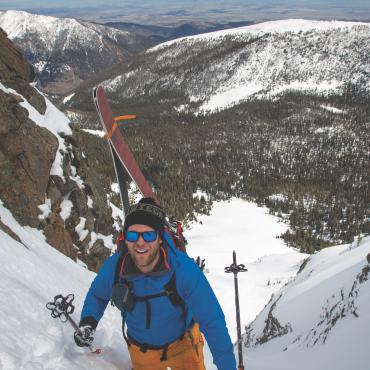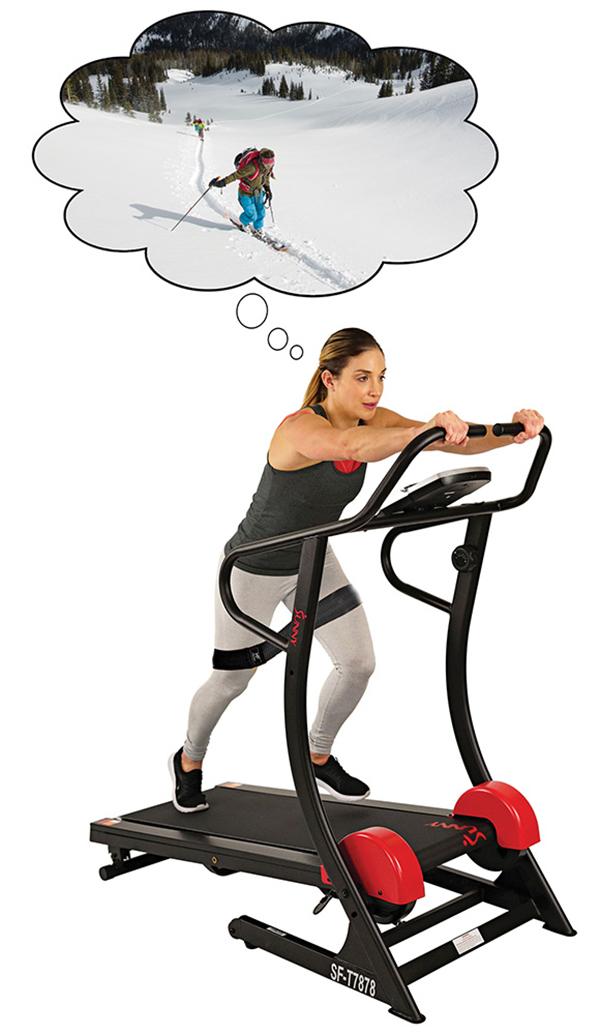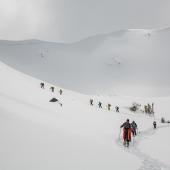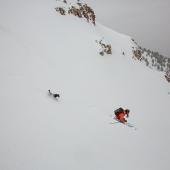Eccentric Approach
Strength training for ski touring.
Screaming hip flexors, cramping calves, tight shoulders, breathless climbs in the skintrack—we’ve all been there. Ski touring combines demanding aerobic output with uphill-specific muscle groups, and downhill-specific strength, balance, and skill. That’s a lot to ask of your body, especially off the couch. A little pre-season training, however, goes a long way. Here are some effective conditioning tips I’ve picked up over the years to help prepare for another season of chasing backcountry powder.
Aerobic Conditioning
This one is easy. Trail running, mountain biking, and hiking at a brisk pace (as when chasing elk through the mountains) are all great ways to keep your cardio on point. Carry a pack similar in weight to your backcountry kit to help hone your balance, strengthen your functional core, and build your shoulders and neck. Long-duration (5+ hours), low-output days are great for simulating skintrack laps, but toss in some high-intensity interval training to bolster heart and lung output.
Downhill Strength
There are excellent pre-season programs available at gyms around town, and a plethora of training regimens online that will get you ready to shred—I can’t do any better. While these are directed at downhill strength and performance, the stronger you are on the down, the better you’ll feel on the up.
Touring-Specific Strength Training
There are ways we can prep specifically for ski touring, most of which can easily be worked into other exercises for efficiency. To help prepare our hip flexors (a small, but important muscle group) for long days of breaking trail in deep snow, try hiking the steep trail to the “M” (or any other steep trail) with ankle weights. Don’t exceed three-pound weights—that’s asking for injury. In a gym, run on a treadmill set to the steepest setting and attach resistance bands to your thighs and calves. The idea is to simulate the resistance of dragging powder skis uphill through deep snow.
To get your legs in shape for touring, focus on eccentric movement rather than explosive power—this is what builds skiing stamina. In a gym, if you’re doing leg presses, try to lower the weight very slowly. Better yet, press up, take one leg off, and slowly lower using just the other leg. At home, get into a lunge position with your back leg elevated on a bench or chair and slowly lower yourself onto the front leg (don’t let your front knee drive over your ankle). Do as many reps as you can and switch.
Calves are often overlooked, but can make a world of difference in ski-touring performance. Calf flexibility, combined with strong anterior tibialis (shin) muscles, make touring easier and more comfortable by allowing a longer, more natural stride in tour mode, and increasing ankle stability and strength for firm sidehilling, kick turns, and bootpacking. To stretch your calf, simply stand on a step, drop your heel, and hold. You can strengthen your anterior tibialis muscles from the couch: just lift your toes as high as they’ll go and hold until your shins are screaming. Rest, and repeat, and think snow!
Drew Pogge owns Big Sky Backcountry Guides and the Bell Lake Yurt.










